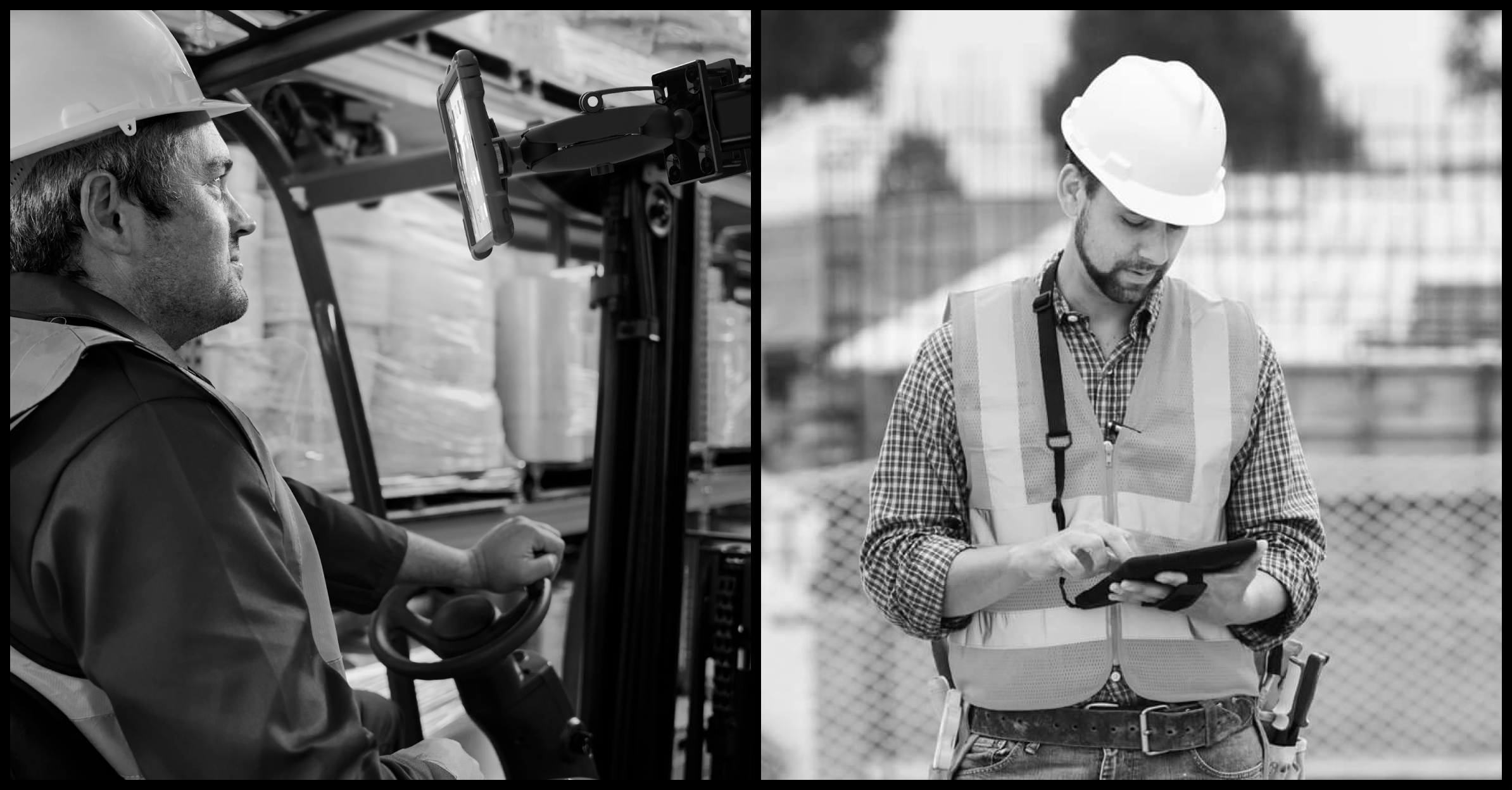
🔻Smart devices like tablets and smartphones are becoming increasingly common in industrial settings. These devices can improve productivity and efficiency by providing workers with real-time data and access to critical applications. However, smart devices are not designed to withstand the harsh environments found in many factories. Without proper protection, a smart device is likely to be damaged or even create dangerous situations for workers.
There are two main types of protective cases often considered for these environments:
HAZLOC or Rugged.
Understanding the differences between these two and knowing when to use each can significantly impact operational safety and efficiency.
What is a Rugged Case?
Rugged cases are designed to protect electronic devices from physical damage due to drops, shocks, vibrations, water, dust, and extreme temperatures. These cases are commonly used in environments that are physically demanding but not necessarily explosive.
Key Requirements for Rugged Cases
- Drop Protection: Usually tested to military standards (MIL-STD-810H), ensuring the case can withstand significant impacts.
- Shock & Vibration Resistance: Protects internal components from damage due to shocks and vibrations.
- Water & Dust Resistance: Often rated with IP (Ingress Protection) standards, such as IP54 or IP68, indicating their ability to withstand dust ingress and water immersion.
- Temperature Extremes: Must maintain functionality in a wide range of temperatures, from cold to extreme heat.
Benefits of Rugged Cases
- Device Longevity: Extends the life of devices by protecting against physical damage.
- Cost Savings: Reduces the need for frequent replacements or repairs.
- Improved Productivity: Minimizes downtime due to device failure.
- Versatility: Suitable for a wide range of environments, from construction sites to outdoor fieldwork.
What is a HAZLOC-certified Solution?
To prevent unexpected combustion, equipment has evolved and is designed to be safe in these situations. These types of equipment must undergo testing and certification before being distributed and used, which depends on the location of the area of consideration. Certifications can include ATEX (European), IECEx (International), and NEC or National Electrical Code (US & Canada) standards. Nationally Recognized Testing Laboratories (NRTLs) like UL, SGS, Intertek, and others certify compliance with these essential safety standards.
International Zone System
ATEX (European) relies on the IECEx (International) classification system. The IEC classification relies on zones to classify hazardous locations.
Zone 0, Zone 1, and Zone 2: Gas or Vapor
Zone 20, Zone 21, and Zone 22: Dust
Each zone number represents the likeliness of explosive or flammable material in an area – with the lower number representing a higher hazard level.
Zone 0 and Zone 20: Continuous and sustained hazard during normal operating conditions
Zone 1 and Zone 21: Intermittent hazard during normal operating conditions
Zone 2 and Zone 22: Abnormal hazard during normal operating conditions
Source: https://www.ul.com/services/ul-and-c-ul-hazardous-areas-certification-north-america
North American Class System
HAZLOC classes are used to categorize areas based on the type and frequency of hazardous materials present. The three hazard classes – Class I, Class II, and Class III – categorize locations based on the type of substance in the atmosphere.
Class I: Locations with flammable gases and vapors, such as hydrogen, ethylene, propane, and methane
Class II: Locations with combustible dust, such as metal dust, carbonaceous dust, flour, grain, wood, and plastics
Class III: Locations with ignitable fibers and flyings
The likeliness of explosive or flammable material in an area receives a class and division classification based on the North American standard. The two divisions classify the hazard levels.
Division 1: Continuous and intermittent hazard during normal operating conditions
Division 2: Abnormal hazard during normal operating conditions
Source: https://www.ul.com/services/ul-and-c-ul-hazardous-areas-certification-north-america
Key Requirements for HAZLOC-certified Solutions
- Safe Design: Cases must be engineered to ensure that they can withstand hazardous atmospheres with different degrees of danger.
- Temperature Control: Materials used must not heat up to ignition temperatures.
- Sealing & Containment: The case must be sealed to prevent the ingress of dust or gases that could pose a risk.
- Material Resistance: Must be resistant to corrosive substances commonly found in hazardous locations.
Benefits of HAZLOC-certified Solutions
- Safety Assurance: Ensures the device cannot ignite hazardous atmospheres, providing peace of mind for workers and compliance with safety regulations.
- Operational Continuity: Reduces the risk of device failure in critical environments, ensuring continuous operation.
- Legal Compliance: Each solution is rigorously tested to ensure it meets regulatory requirements, avoiding fines and legal issues.
- Enhanced Durability: Often combines rugged features with safety features, providing comprehensive protection.
The Dangers of Using Devices Without Protection
In demanding environments, the use of unprotected or inadequately protected devices can pose serious risks. Whether it's the threat of igniting explosive atmospheres, the vulnerability to physical damage from harsh conditions, or the potential for significant operational and financial setbacks, the consequences of neglecting proper device protection are profound.
Below, we outline the critical dangers associated with using devices without appropriate safeguards, emphasizing the importance of investing in either HAZLOC-certified solutions or rugged cases to ensure safety, reliability, and compliance.
- Safety Hazards: In hazardous locations, an unprotected device could ignite explosive atmospheres, leading to catastrophic accidents.
- Device Damage: Physical impacts, dust, water, and extreme temperatures can quickly render a device inoperable.
- Operational Downtime: Damaged devices lead to operational delays, affecting productivity and profitability.
- Increased Costs: Frequent repairs and replacements can become a significant financial burden.
Choosing the Right Solution
Choosing the right protective case for enterprise use depends on the specific environment and risks associated with it. HAZLOC-certified solutions are essential for safety in dangerous environments, ensuring compliance and protecting workers. Rugged cases provide robust protection against physical damage in demanding conditions, enhancing device longevity and reliability.
Both solutions provide critical protection, but the choice hinges on the balance between flexibility, cost, and the specific safety requirements of the environment in question. Enterprises should conduct a thorough risk assessment and consider long-term operational needs when making their decision.




